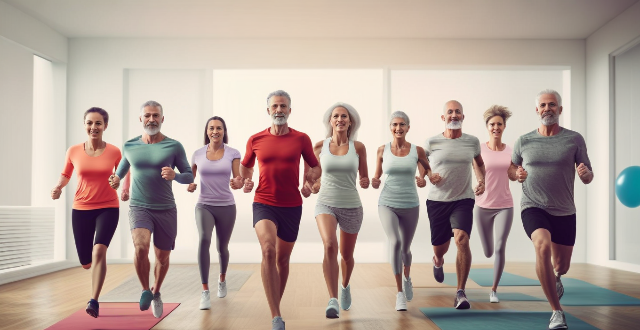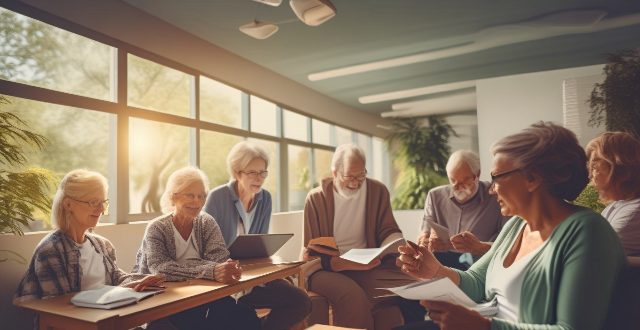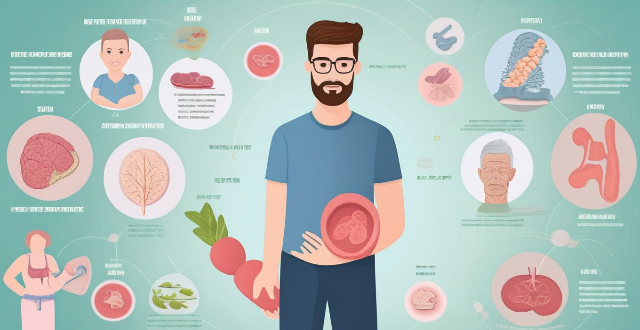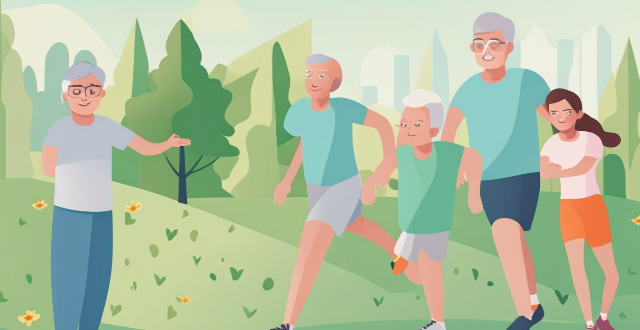Version Older

Can I downgrade to a previous version of iOS after updating ?
Downgrading to a previous version of iOS is possible but involves backing up your device, downloading the older firmware, putting your device into recovery mode, restoring through iTunes or Finder, and setting up your device again. Reasons for downgrading include compatibility issues, performance concerns, bugs, and personal preference. However, there are risks such as data loss and security vulnerabilities, and Apple's signing window limits the versions you can downgrade to. It's generally recommended to stay on the latest iOS for the best experience and support.

Can Wi-Fi 6 penetrate walls better than older versions ?
Wi-Fi 6, the latest wireless networking technology, promises faster speeds and better performance than older versions. One common question is whether Wi-Fi 6 can penetrate walls better than its predecessors. The answer depends on several factors, including wall materials and distance between the router and device. However, Wi-Fi 6's improved signal strength and range generally enable it to penetrate walls more effectively than older versions. To maximize Wi-Fi signal strength, users should place their router in a central location, avoid metal objects near the router, upgrade firmware regularly, and consider using a Wi-Fi extender or mesh network for larger spaces.

Is it possible to upgrade the storage capacity of an older iPhone model ?
Upgrading the storage capacity of an older iPhone model is not possible due to hardware and software limitations. The storage on iPhones is soldered onto the motherboard and encrypted, making it difficult to remove and replace. Additionally, upgrading the storage might require a newer version of iOS that is not compatible with the older device, leading to software issues. Alternative solutions for managing storage effectively include deleting unused apps, clearing cache, using cloud storage services like iCloud, and regularly backing up and resetting the device to factory settings. These methods can help alleviate storage issues and make the most out of the available space.

Can I still use my old apps after updating to the latest iOS version ?
Updating to the latest iOS version is a common practice for many iPhone and iPad users. It brings new features, improvements, and security patches to your device. However, it also raises questions about compatibility with existing apps. In this article, we will explore whether you can still use your old apps after updating to the latest iOS version. One of the main concerns when updating to a new iOS version is compatibility with existing apps. While most apps are designed to work with multiple versions of iOS, some may not be compatible with the latest version. This can lead to issues such as crashes, glitches, or missing features. To ensure compatibility, developers typically update their apps to support the latest iOS version. If an app has not been updated recently, it may not work properly or even fail to launch on the new iOS version. Before updating to the latest iOS version, it's a good idea to check if your favorite apps are compatible. Here's how you can do it: 1. Open the App Store on your device. 2. Tap on your profile picture in the top right corner. 3. Scroll down to see the list of available updates for your installed apps. 4. If an app has an update available, it means that it is compatible with the latest iOS version. 5. If an app does not have an update available, it may still be compatible, but it's worth checking with the developer or looking for information online. Once you have confirmed that your apps are compatible with the latest iOS version, you can proceed with updating them. Here's how: 1. Open the App Store on your device. 2. Tap on your profile picture in the top right corner. 3. Scroll down to see the list of available updates for your installed apps. 4. Tap "Update All" or individually update each app by tapping "Update" next to it. If you encounter compatibility issues with an app after updating to the latest iOS version, here are some troubleshooting steps you can try: 1. Restart your device: Sometimes simply restarting your device can resolve compatibility issues. 2. Update the app: Make sure that you have the latest version of the app installed from the App Store. 3. Contact the developer: If updating the app does not resolve the issue, contact the developer through their support channels or website for assistance. 4. Look for alternatives: If an app is no longer compatible with the latest iOS version and the developer is not providing updates, consider looking for alternative apps that offer similar functionality. In conclusion, while updating to the latest iOS version may raise concerns about compatibility with existing apps, most apps are designed to work with multiple versions of iOS. By checking for compatibility before updating and following these troubleshooting steps, you can continue using your favorite apps without any issues.

Is Wi-Fi 6 backward compatible with older devices ?
Wi-Fi 6, the latest wireless networking standard, is backward compatible with older devices supporting previous standards like 802.11a/b/g/n/ac. Older devices can connect to a Wi-Fi 6 network using the best available standard they support. Upgrading to Wi-Fi 6 offers benefits like faster speeds, better performance, and improved battery life.

How does exercise benefit socialization in older adults ?
Exercise is not only beneficial for physical health but also plays a crucial role in enhancing socialization among older adults. Here's how: Improved Mood and Confidence, Increased Opportunities for Social Interaction through Group Activities and Outdoor Exercise, Enhanced Cognitive Function, Physical Health Benefits Supporting Social Engagement, and Mental Health and Well-being. In conclusion, regular exercise provides numerous avenues for increased socialization among older adults by improving emotional well-being, cognitive function, physical health, and creating opportunities for interaction through various activities. It's a holistic approach to enhancing the social lives of seniors, contributing to their overall quality of life.

How can older adults stay motivated to exercise regularly ?
Staying motivated to exercise regularly is crucial for older adults to maintain their physical health, mental well-being, and overall quality of life. Here are some strategies that can help them stay on track: 1. Set realistic goals 2. Find an exercise buddy 3. Mix up your routine 4. Track your progress 5. Reward yourself 6. Make it part of your daily routine

Can regular exercise prevent cognitive decline in older adults ?
Regular exercise may help prevent cognitive decline in older adults by promoting neuroplasticity, improving blood flow to the brain, and reducing inflammation. Multiple studies have found positive associations between physical activity and cognitive function in this age group. Guidelines recommend aerobic exercise, resistance training, and activities that improve flexibility and balance. Making exercise a regular part of daily life is key for maintaining cognitive benefits over time.

Can resistance training help improve bone density in older adults ?
Resistance training has been shown to have a positive impact on improving bone density in older adults. This form of exercise strengthens the muscles and bones, reducing the risk of osteoporosis and fractures. To start resistance training, it is important to consult with a doctor, begin slowly, focus on compound movements, incorporate weight-bearing exercises, and seek professional guidance for safety and effectiveness. Consistency is key in achieving optimal results.

What are the psychological benefits of group exercise for older adults ?
The article discusses the psychological benefits of group exercise for older adults, including increased social interaction, enhanced cognitive function, and increased motivation and accountability. It emphasizes how group exercise can reduce feelings of isolation and loneliness, improve mood and mental health, stimulate brain activity, delay the onset of cognitive decline, provide peer support and encouragement, and promote goal setting and achievement. Overall, it suggests that participating in group exercise activities can greatly enhance the overall well-being of older adults and contribute to a higher quality of life as they age.

What safety precautions should be taken when organizing social sports events for older adults ?
When organizing social sports events for older adults, safetyWhen organizing social sports events for older adults, safety to prevent injuries and ensure a These precautions include health screening, appropriate facilities and equipment, trained personnel, warm-up and stretching exercises, hydration and nutrition, appropriate activities, and supervision and support. By implementing these measures, organizers can create a safe and enjoyable environment for older adults to participate in social sports events while minimizing the risk of injury or adverse health effects.

Are there any online learning resources specifically designed for older adults ?
There are various online learning resources designed for older adults, offering a wide range of educational opportunities catering to their unique needs and preferences. Popular platforms include Coursera, Edx, Udemy, The Great Courses Plus, LinkedIn Learning, Khan Academy, Ageless Lifestyle Institute, Open Learning, Rosetta Stone, and AARP's Life Reimagined. These platforms provide courses on diverse subjects such as health, wellness, retirement planning, history, literature, science, technology, creative writing, personal development, and more. They offer flexibility in learning pace, certification upon completion, expert instructors, downloadable lectures, skill tracking, compatibility with devices, free educational content, step-by-step explanations, exercises and quizzes, wellness and health courses, customized learning paths, university partnerships, language learning, and courses on life transitions and personal development. These resources ensure that older adults can continue to grow intellectually and personally regardless of their age, providing ample opportunities for senior learners to engage in lifelong learning.

Are there any tips for improving the performance of older iPhone models ?
Improving the performance of older iPhone models requires a combination of software and hardware optimizations. Software optimizations include updating iOS, clearing storage space, reducing motion effects, resetting all settings, and limiting background app refresh. Hardware optimizations involve ensuring battery health, cooling down the device, replacing the battery, using a compatible case, and avoiding water damage. Additional tips include closing unused apps and managing notifications. By following these tips, users can improve their older iPhone's performance and extend its lifespan.

How can older adults benefit from exercise in terms of mental health ?
Exercise is crucial for maintaining and improving mental health in older adults. It enhances mood, reduces depression symptoms, improves cognitive function, manages stress, and provides opportunities for social interaction. Incorporating regular exercise can significantly promote overall well-being in the aging population.

Are there any specific exercises recommended for improving balance and stability in older adults ?
Sure, here are some specific exercises recommended for improving balance and stability in older adults. Tai Chi is a gentle form of exercise that involves slow, flowing movements. It has been shown to improve balance, flexibility, and overall physical function in older adults. Yoga is another great option that combines physical postures, breathing techniques, and meditation to improve strength, flexibility, and balance. Standing on one foot is a simple exercise that can be done anywhere and requires no equipment. Heel-to-toe walk helps improve coordination and balance by walking heel-to-toe in a straight line. Leg lifts help strengthen the muscles around the hips and thighs, which are essential for maintaining good balance. These exercises are just a few examples of how older adults can improve their balance and stability through regular practice.

Is it necessary for older adults to consult a doctor before starting a new exercise program ?
Consulting a doctor before starting a new exercise program is crucial for older adults to ensure safety, optimize health outcomes, and achieve long-term success in maintaining an active lifestyle. Health assessments, safety precautions, customized exercise plans, and benefits of consultation are key considerations.

How does updating to the latest iOS version affect battery life on an iPhone ?
Updating to the latest iOS version can impact iPhone battery life positively by improving efficiency, fixing bugs, and adding battery-saving features. However, it might also negatively affect battery life by increasing demands, introducing background processes, resetting optimizations, causing compatibility issues, and requiring indexing and optimization post-update. To maintain good battery health after updates, users should monitor usage, disable unnecessary features, update apps, manage background refreshes, reduce screen brightness, use Low Power Mode, and check for further updates.

How does age affect a woman's fertility ?
Age is a significant factor that affects a woman's fertility. As women get older, their ovaries produce fewer eggs and the quality of those eggs declines. Other factors such as hormonal changes, uterine lining thinning, and increased risk of miscarriage also contribute to decreased fertility in older women. If a woman wants to have children at an older age, she may need to consider assisted reproductive technologies such as IVF or ICSI. However, these methods are expensive and not always guaranteed to work.

How does exercise benefit the health of older adults ?
Exercise plays a crucial role in maintaining the health and well-being of older adults. Regular physical activity can significantly improve their quality of life by preventing diseases, promoting longevity, and enhancing mental health. This text discusses the various benefits of exercise for seniors, including improvements in strength, endurance, mobility, balance, chronic disease management, stress reduction, emotional health, cognitive functioning, social interaction, independence, and overall quality of life. Engaging in regular physical activity is one of the most effective ways for seniors to maintain a healthy and fulfilling lifestyle as they age.

Is it safe to update my iPhone to the latest iOS version ?
Updating your iPhone to the latest iOS version is generally considered safe, but it's important to take precautions such as checking compatibility, backing up your data, and freeing up storage space before installing the update. If you encounter any issues after updating, try restarting your device or contacting Apple Support for assistance.

How can I make my own healthy version of a classic street food dish ?
Street food is delicious but often unhealthy; here's how to make a healthier version at home. Choose whole foods over processed ingredients, use healthier cooking methods like grilling or steaming, reduce sodium and sugar intake, and add more vegetables and fruits for nutritional value.

How does age affect heart rate during exercise ?
Age affects heart rate during exercise by altering the structure and function of the aging heart, reducing maximum heart rate, shifting autonomic regulation towards sympathetic dominance, and decreasing cardiac reserve. Older individuals can still improve their cardiovascular fitness through regular exercise and lifestyle modifications.

How does age affect the cost of insurance ?
The article discusses how age affects the cost of insurance, with younger drivers typically paying higher premiums than older drivers. It highlights that health insurance costs can increase as people age due to increased risk factors and the need for more frequent medical care. Life insurance rates may also rise with age, while auto insurance rates may decrease for retired drivers who spend less time on the road. Homeowners insurance costs depend on the condition and value of the home, but older homes may require more maintenance and repairs. The article provides tips for managing insurance costs as you age, including reviewing coverage regularly, maintaining a good driving record, staying healthy, and considering long-term care insurance.

How does age impact the ability to learn and improve sports skills ?
Age impacts learning and improving sports skills due to physical, cognitive, and psychological changes. Physical changes include decline in muscle mass and strength, decreased cardiovascular fitness, and joint pain and stiffness. Cognitive changes involve slower reaction times, decreased motor coordination, and memory loss. Psychological changes include fear of injury and lack of motivation. By adapting training accordingly, older athletes can continue to improve their sports skills and enjoy participating in sports throughout their lives.
